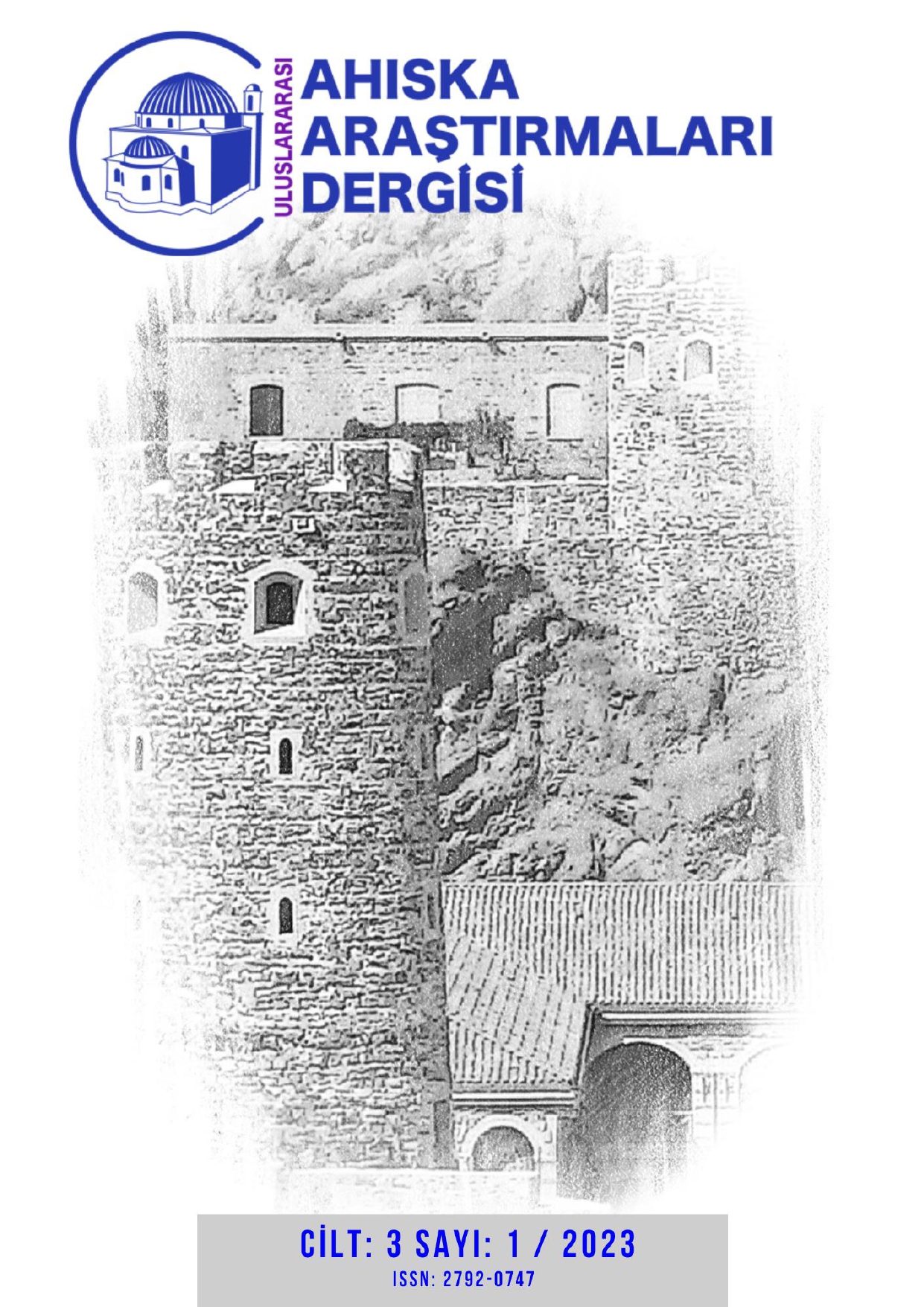The Image of Women in Ahiska Turks Through Audio-Visual Works
DOI:
https://doi.org/10.5281/zenodo.7988144Keywords:
Ahiska Turks, Women, Audio-visualAbstract
The Ahiska Turks, separated from their homeland of Ahıska in the 19th and 20th centuries and exiled all over the world, live as a diaspora in different countries, especially in the countries of the former Soviet Union. Like other diasporas, Ahıska Turks strive to preserve their culture, language, customs, and traditions and to pass on their cultural values to future generations. The most effective method of transmitting cultural heritage is the production of audio-visual works. In this context, it is hoped that the study of works produced in the cinema, as the most remarkable platform, will provide us with sufficient data about diaspora societies. Ahıska Turks often used cinema to protect their cultural heritage.
The use of films was chosen as the main method to understand the place and role of Ahıska Turkish women in the family and community, which is the subject of this study. The study qualitatively analyses the audio-visual works on the stories of the Turks who tried to adapt to their new countries and were always anxious not to forget and make others remember the home they were exiled from, Ahıska. In the sociological analysis method used in this context, the examination of the social conditions of the period in which the film was produced or dealt with in its content is emphasized. In the study, the films “Tatlı Puvar”, “Borç”, “Gerçek Aşk”, “Uzun Yol”, “Ben de Sevdim”, “Hayal”, the serial “Büyük Sürgün Kafkasya” and the documentary “Sıfırlanan Hayatlar”, “Sürgün 75. Yılında Ahıska Türkleri” are examined as samples. This research aims to obtain data on the place and role of women in the family and social life of Ahıska Turks. It also aims to reveal the peculiarities in the portrayal of female characters.
References
Bazin, A. (1966). Çağdaş sinemanın sorunları. Bilgi Yayınevi.
Çınar, İ. (2018). Atabek yurdu etnopedagojisi: Ahıska örneği. Turkish Studies Dergisi, Sayı 13/4 Kış, s. 318-386.
Derviş, L. ve Devrisheva, Kh. (2016). Sürgünden günümüze Ahıskalı Türk kadını, Manisa Celal Bayar Üniversitesi Yayınları Yayın No: 0017, Ş. Ulusan ve Sh. Kayhan (Ed.). s. 827- 836.
Hacılı, A. (2021). Osmanlı Türklerinin sürgün tiyatrosu “Miko Gösterisi”. Erzurum Sevdası Dergisi, s. 38-41.
İmançer, D. (2004). Türk sinemasında suskun kadın imgesi, Manas Üniversitesi Sosyal Bilimler Dergisi, Cilt 6, Sayı 12, s. 203-2011.
Ilıcak, N. G. (2020). Somut olmayan kültürel miras ve sinema. Editör: Sinem Tuna, Kültürel Miras ve Sinema. Kriter Yayınları.
Kırmaz, Z. (2018). Göç ve suç arasında bir ilişki var mı?: bütüncül bir bakış. Bitlis Eren Üniversitesi Sosyal Bilimler Enstitüsü Dergisi. Cilt 7, Sayı 2, s. 562-599.
Özden, Z. (2020). Film eleştirisi film eleştirisinde temel yaklaşımlar ve tür filmi eleştirisi. İmge Kitabevi.
Türk Devletleri Teşkilatı (2021). Türk Dünyası 2040 vizyonu, 12 Kasım 2021, 8. Zirve Toplantısı, İstanbul.
Yaren, Ö. (2007). Avrupa göçmen sineması, [Doktora tezi, Ankara Üniversitesi, SBE].
Yıldız, İ. (2018). Türkiye’ye uluslararası göçler ve Türkiye’nin göç politikası. Kırmızı Çatı Yayınları.
Wolynn, M. (2022). Seninle başlamadı: kalıtsal aile travmalarının kim olduğumuza etkileri ve sorunların üstesinden gelmenin yolları (46. Baskı), (Çev. M. Madenoğlu). Sola Unitas Yayınları.
Zor, L. (2020). Kazakistan sineması. Astana Yayınları.
Karabük İl Kültür ve Turizm Müdürlüğü, Somut Olmayan Kültürel Miras Nedir?
https://karabuk.ktb.gov.tr/TR-195763/somut-olmayan-kulturel-miras-nedir.html
Downloads
Published
How to Cite
Issue
Section
License
Copyright (c) 2023 Uluslararası Ahıska Araştırmaları Dergisi (AHARDE)

This work is licensed under a Creative Commons Attribution 4.0 International License.
Lisance
The journal is licensed under a Attribution 4.0 International (CC BY 4.0).
You are free to:
- Share — copy and redistribute the material in any medium or format
- Adapt — remix, transform, and build upon the material
- for any purpose, even commercially.
- The licensor cannot revoke these freedoms as long as you follow the license terms.
Under the following terms:
-
Attribution — You must give appropriate credit, provide a link to the license, and indicate if changes were made. You may do so in any reasonable manner, but not in any way that suggests the licensor endorses you or your use.
- No additional restrictions — You may not apply legal terms or technological measures that legally restrict others from doing anything the license permits.




